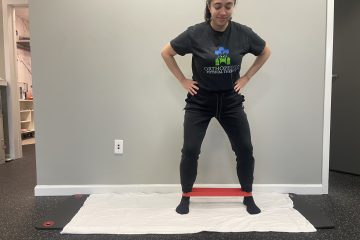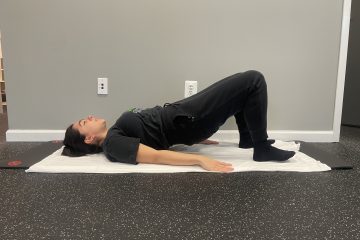If you identify as a woman, you have likely heard of kegels. As you read this right now, you may be flashing back at articles using cues like “imagine sucking a blueberry with a straw, but the straw is your vagina” and asking you to “build kegels into your daily routine, like when you’re at a red light.”
Today we’ll get more into these mystical exercises and explore whether they really are deserving of all the hype.
 So what is a kegel anyway? A kegel is a pelvic floor contraction. You squeeze the muscles around the openings of the pelvic floor (urethra, vagina, and rectum) and lift.
So what is a kegel anyway? A kegel is a pelvic floor contraction. You squeeze the muscles around the openings of the pelvic floor (urethra, vagina, and rectum) and lift.
That doesn’t sound so bad…what’s the problem with kegels?
A kegel is ONLY a contraction. It doesn’t address the relaxation of the pelvic floor. The pelvic floor needs a full range of motion which includes contracting AND relaxing.
Additionally, when doing a kegel (or pelvic floor contraction), other muscles can assist the pelvic floor and compensate, making it seem like the pelvic floor is working when it isn’t, and actually end up over-activating some of those helper muscles such as the glutes, adductors, and abdominals.
Kegels should always be done under the instruction and guidance of a pelvic floor PT. This is because kegels can be helpful in certain circumstances and not in others, and the nuance requires professional help to navigate.
When should we do kegels?
- When there is true muscle weakness. However, most people actually don’t have issues with pelvic floor weakness, they have issues with pelvic floor relaxation. Sometimes a tight, and non–dynamic (unable to fully contract and relax) pelvic floor can mimic a weak pelvic floor (why we need a Pelvic PT to distinguish).
- As a part of an urge-suppression strategy for those dealing with urge incontinence.
- When dealing with prolapse symptoms and trying to protect the pelvic floor while lifting (again, always under guidance from a Pelvic PT).
When should we NOT do kegels?
- If you have…
- Pelvic pain
- Pain with intercourse
- Pain with tampon insertion
- Recurrent infections
- Tailbone pain
- Overactive bladder
- Endometriosis
- Interstitial Cystitis (IC)
- Constipation
In these cases, we really need to lengthen and relax the pelvic floor muscles, so kegels would be the opposite of that, causing a shortening contraction of the muscles which can lead to more irritation and worsening of symptoms.
Why are kegels insufficient?
The pelvic floor does not function in a vacuum—the pelvic floor needs to work with all surrounding muscles and structures.
It needs to be able to respond automatically and sometimes quickly as well as have endurance (endurance involves dynamic mobility).
This is a bit of an oversimplification, but for analogy’s sake, I like to tell people that the pelvic floor muscles are like your lungs—just like your lungs expand and contract to support you with movement (faster when you’re running and slower when you’re sitting) and work in conjunction with other organ systems like your heart, likewise your pelvic floor needs to contract and relax to support you with movement and work with the surrounding muscles systems.
When you’re running, your pelvic floor goes through phases of shortening and lengthening to support you as you move. If you try to hold a kegel or do repeated kegels while running, the pelvic floor would not be mobile and would fatigue quickly.
When you are jump roping, your pelvic floor has to respond to that increased force and rapid movement. Similarly with jumping on a trampoline—that is a ton of force on the pelvic floor and higher jumps will require more endurance than lower jumps. Kegels would just fatigue your pelvic floor and diminish any endurance.
When lifting something heavy (whether a barbell or a child or some hefty groceries #onetriponly #nobagleftbehind), the pelvic floor is also taking on that increased load. Because a kegel is essentially a “body-weight” exercise, if you will, no matter how intensely you can kegel, or even how heavy a yoni egg or vaginal weight you can carry, it will not translate to actively loading the tissue of the pelvic floor and building up functional strength.
At OrthoPelvic, we look at your specific pelvic floor, your specific daily life, and your specific goals. We KNOW that before we try to strengthen your pelvic floor, we HAVE to lengthen it, and when we strengthen we have to use functional exercises to DYNAMICALLY strengthen the pelvic floor.
The pelvic floor is a COMPLEX system comprising over 20 muscles and the pelvis houses three organs in women: bladder, uterus, and rectum, and two organs in men: bladder and rectum. It is wild to think that a one-size-fits-all exercise could address that beautiful and complex system, not to mention the myriad forms of dysfunction that can manifest.
Long story short: stop the red-light kegels, and call us today to see how a pelvic health specialist can solve your issues. You got this, boo. There. Is. Help for your issue!
Curious to learn a little bit more? Schedule your FREE 10-minute consult call today ✨
Be empowered in education,
OrthoPelvic Physical Therapy


